If you want to stay ahead of the curve, an annual review of your employee handbook isn’t something you should schedule for later.
As the past few years have brought many changes to the workplace landscape, it’s more important than ever to update your employee handbook with new rules and regulations as it can protect you and your employees from potential conflicts down the line.
To guide you through that process, we’ve compiled a list of the eight employee handbook updates you should seriously consider. Let’s see what they are.
COVID-19 Policies
Since the pandemic broke out at an unprecedented global scale, companies have had to respond to new challenges quickly to protect the health and safety of their employees.
Many companies have already incorporated addendums in their employee handbooks related to wearing masks, vaccinations, social distancing, testing, and other safety and health regulations to prevent the spread of COVID-19 in the workplace.
For example, have a look at what the state of Delaware recommends businesses to pay special attention to when formulating their own COVID-19 policies.

Source: Delaware.gov
As the world marches on, companies are slowly starting to see that COVID-19 will most likely remain a part of our lives, and have formed policies to reflect that.
For example, some businesses have taken a stance on vaccination. And while some opted for mandatory vaccination for their workers, others have decided to take on a more lax approach.
Starbucks has recently stated that their employees will no longer have to show proof of vaccination or a negative COVID-19 test after the court ruling blocked this mandate for large businesses.

Source: The New York Times
Updates regarding the COVID-19 policy should be reflected in other policies as well, such as paid sick leave and OSHA policies, as they are closely connected.
So if you are going to change the number of paid sick days for COVID-19 infections or impose new rules regarding measuring temperature or sanitizing workplace surfaces, be sure to make necessary changes in those policies too.
Keep in mind that the safety and health of your employees should come first. The better you define the rules regarding COVID-19, the better you will be able to protect both your employees and your company.
Leave of Absence
In addition to coming up with a firm policy framework for COVID-19, many employers will also most likely have to update their employee handbooks to adhere to the new laws and legislation related to PTO and vacation time policies, which has seen some changes this year.
This is especially true for states like Oregon, Colorado, Connecticut, Washington, and California that have either added amendments or modified existing leave of absence laws.
For example, suppose your company operates in California or has offices in that state. In that case, you will need to change your leave of absence policy as, according to the new law, the definition of a family member is now extended to include in-laws.
This means that your employees will be able to request family and medical leave to take care of a parent-in-law who is experiencing health problems.
An even more straightforward example of the changes you will need to include in your employee handbooks is undoubtedly the introduction of Juneteenth as a federal holiday.
Many companies have rushed to announce to their employees that they have the right to celebrate this holiday that commemorates the end of slavery, but you, as an employer, can’t stop just at announcements.

Source: Agency Checklists
To protect your company legally, you have to update this in your employee handbook and define in-depth how your company will manage this day: giving employees a paid day off, paying them overtime, or requiring them to work that day in exchange for an extra day off at another time.
How you treat your employees will reflect on their motivation, satisfaction, and productivity.
And if you are explicit and up-to-date about what employees are entitled to, they will have a sense that their rights are guaranteed. As a result, they’ll perceive you as an honest employer they like to work for.
Home Office Policies
In the wake of the COVID-19 pandemic, remote work has become quite common.
And by all accounts, it’s here to stay.
Given that we've gained a wealth of experience over the past two years when it comes to working from home, we now know much more about its best practices and procedures.
Therefore, it is recommended that you revise the home office policies, update the existing regulations, remove those that are no longer valid, and, if necessary, add new ones.
Existing rules regarding using the company's equipment at the home office, such as cell phones, laptops, software, keyboards, and screens, should now be updated.
Here are some common home office elements that may need attention in your policymaking:
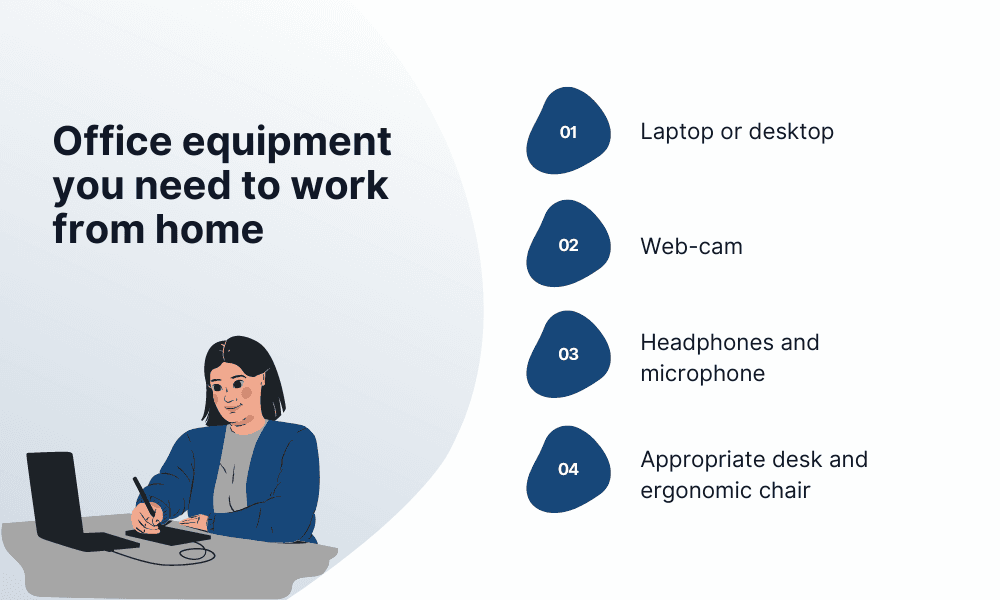
Source: Archbee.com
One of the burning questions that two years of working from home have raised is whether the company should provide ergonomic equipment to remote workers.
Although employers don't have an explicit obligation to provide their employees who work from home with office furniture, under OSHA requirements, they still have the responsibility to keep the workplace safe and free from repetitive strain injuries.
Injuries related to the workplace can result in compensation claims even if that workplace is remote, which can affect you financially and damage your company's reputation.
That is why you must define whether your employees are entitled to an ergonomic chair, table of the recommended height, special mousepad and keyboard, and other inventory necessary for their health and safety in the home workplace.

Source: BestProduct
Keep in mind that the better you define what working for your company entails, the easier it will be for your employees to know what to do in any given situation.
In that sense, there's nothing worse than an outdated employee handbook, as it can make your company seem unprofessional and not up with the times.
Policies related to technology, even if they apply only to office inventory, can become obsolete particularly quickly. Therefore, it is a good idea to revise this section at least once a year.
Data Protection
Unfortunately, data can be compromised at any time, in a myriad of possible ways.
Your hard drive may crash, your computer may become infected with a virus, software and hardware can malfunction, and you may even lose data by accidentally deleting it.
When you work in the office, you might have the entire IT department at your disposal, which can step in and solve the problem in the blink of an eye.
But when you work remotely, you are often left on your own–and it can only take one mistake for disaster to happen, which will compromise the confidentiality of the company's sensitive documents.
Plus, remote work implies that sensitive data will travel between your central office and the homes of your employees, making it more vulnerable to cyberattacks.
According to the recent Tenable study, 74% of companies believe that recent business-impacting cyberattacks are related to vulnerabilities in technology put in place during the pandemic.
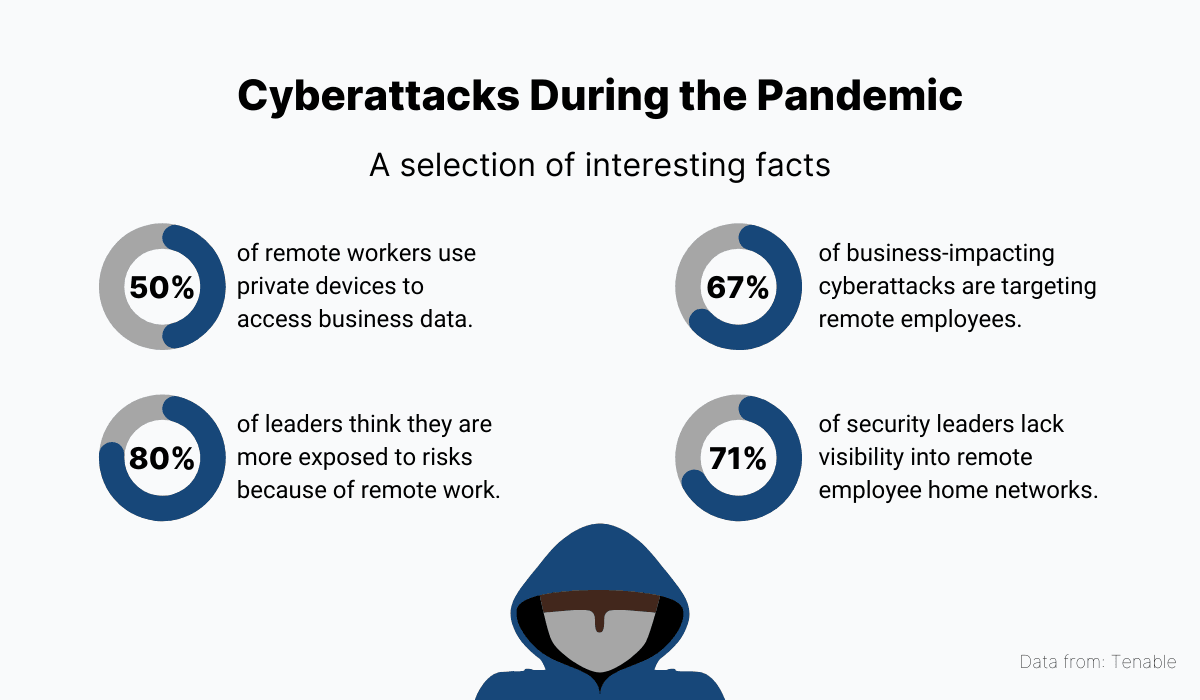
Source: Archbee.com
And that basically means that not only the confidentiality of documents can be compromised, but personal client information might be at risk too.
That's why it's of utmost importance to address data security issues in your employee handbook and establish detailed procedures and regulations to maximally protect your company.
For example, you can emphasize that all employees must use antivirus programs and secure WiFi networks, protect their passwords, and shut down their computers at the end of the day.
You can also outline the danger of phishing emails, using the company's laptops in public places like cafes or trains, and insist on applying the two-factor authentications to any third-party service.
We all know the saying that it's better to be safe than sorry. In this case, try to be safe and update your employee handbook with security measures.
Bear in mind that failing to consider security can have catastrophic consequences on your business and company reputation.
So if you give this section of the handbook your full attention, you can definitely prevent bigger problems down the line.
Dress Code
The pandemic and working from home have brought about some changes to the dress code in the workplace as well.
After two years of working in pajamas, leggings, and slippers, and with the return to the office on the horizon, many employees are not ready to jump back into formal business attire. They argue that being comfortable at work actually helps them be more productive.
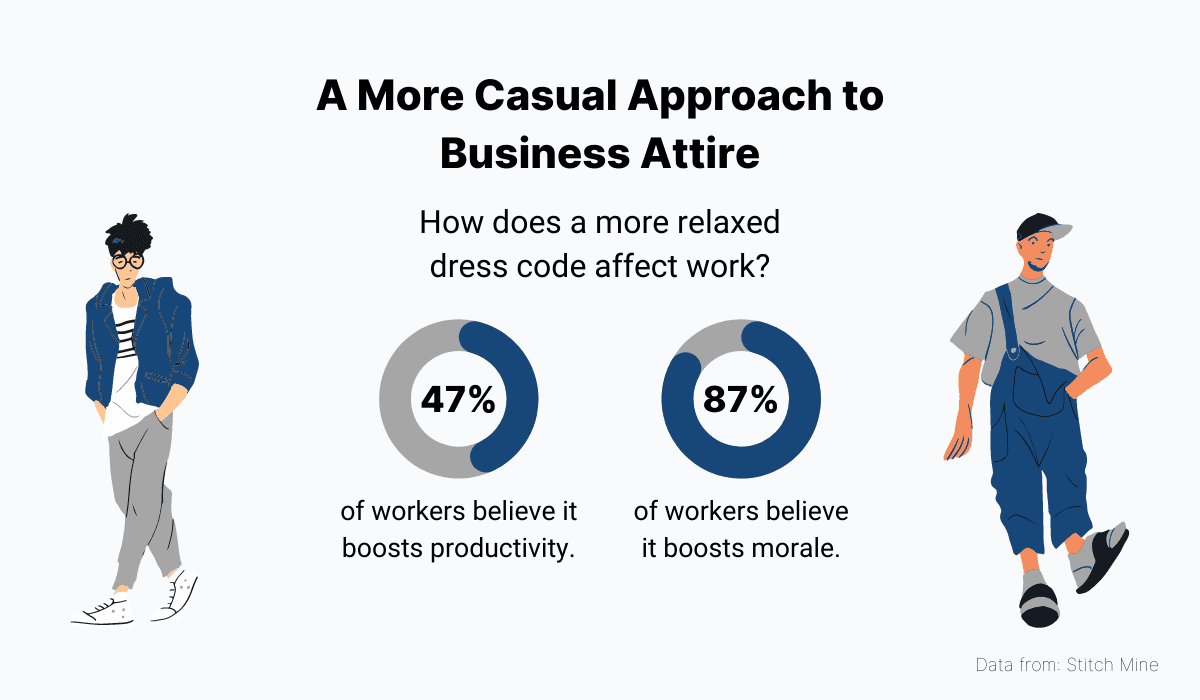
Source: Archbee.com
This means that dictating the dress code in post-covid times might not go well with employees, as it can cause dissatisfaction and increase turnover.
Many forward-thinking businesses have already anticipated this change and updated the dress code in their employee handbooks by adopting a casual wear policy at work.
According to a recent study, 36% of the companies have considered relaxing their dress code, which is 17% more than in 2014.
So it would be a good idea to go through your employee handbook and check if any changes are needed in this section.
There is another important issue that you should pay special attention to because it can have legal consequences for your business.
After California first passed the CROWN Act in 2019, which bans any racial discrimination based on natural hairstyles, more and more states are changing their legislation every year.
In fact, as of January 2022, twelve new states have banned discrimination based on hair.
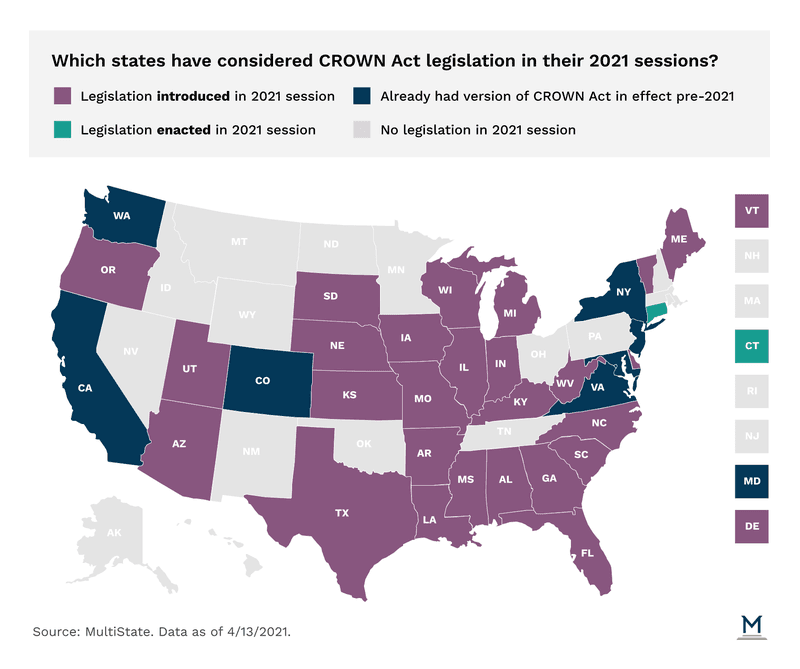
Source: MultiState
This means that natural hairstyles such as braids, twists, locks, and knots can no longer be addressed and deemed as unprofessional hairstyles in the workplace.
Therefore, depending on the state in which your company operates, be sure to check your employee handbook and make sure it complies with this law.
As you can see, times have changed significantly even when it comes to how we dress at work.
Keeping in mind your company’s specific needs, it will be worth the effort to update your dress code policies to reflect those changes. It can go a long way in creating a more equal, productive, and effective workplace culture.
Work Hours
From everything we’ve outlined so far, it’s clear that keeping up with the changes that have affected the workplace in the past two years proved to be highly challenging for employers.
This is especially true for changes related to working hours.
In fact, updates may need to be more extensive in this section compared to other areas of the employee handbook.
This is because now three types of work coexist equally in the workplace: hybrid, flexible, and fully remote.
As more and more companies return their workforce to the offices, they can expect an increase in the number of employees who will request to continue with remote or hybrid work arrangements.
Furthermore, employees consider work-life balance to be one of the deciding factors in whether to take the job and stay with the company or not.
Standard 9-to-5 work is no longer an option for many of them, especially for those with young children, so employers are likely to face increasing demands for flexible working hours.
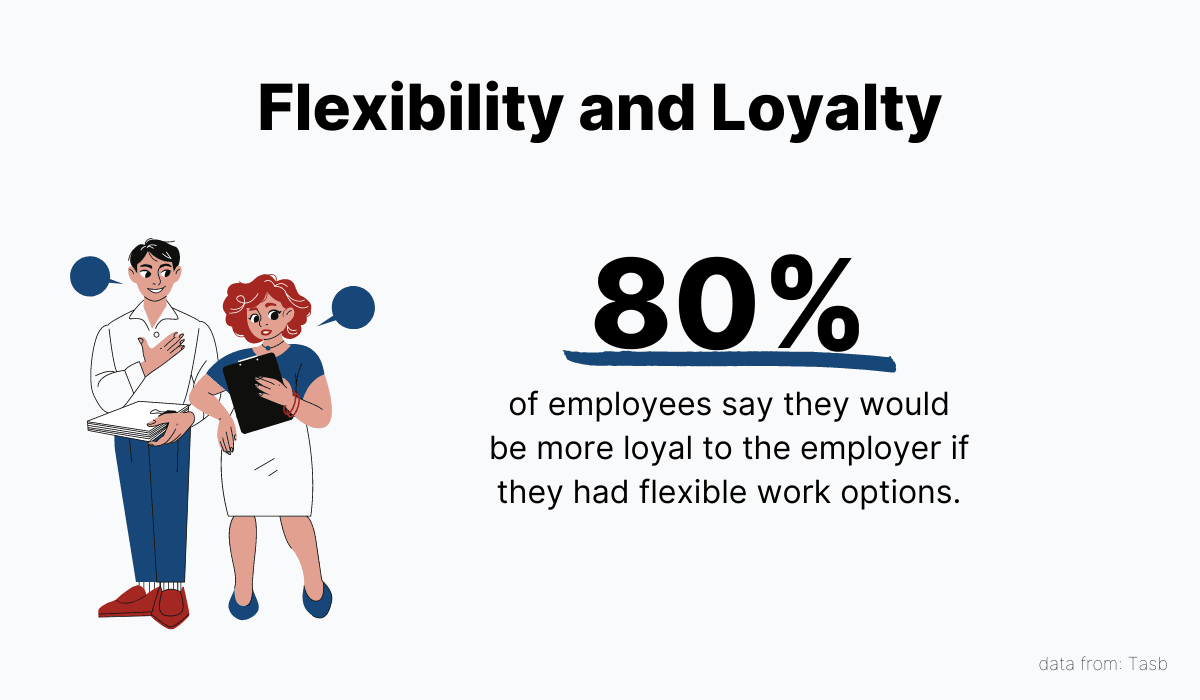
Source: Archbee.com
Also, as many as 63% of workers report working more than 40 hours a week since switching to remote work, because they start working earlier and finish later. As this could become a major problem for employee satisfaction in the long run, you should consider regulating this area too.
This is a topic that employees consider to be of great importance, so be sure to provide them with clear, transparent, and well-argued explanations why some employees can work remotely or have flexible work hours, while others can’t.
Also, determine precisely how the time will be tracked, when they can take lunch breaks, how the overtime will be compensated, and other helpful information.
Once again, the more you concentrate on rules and regulations, the more manageable it will be to harmonize all these work options and make them functional in your everyday work practice.
Salary Ranges
To reduce gender and racial wage gaps, more and more states are joining the movement that seeks greater transparency when it comes to salaries.
For decades, women and workers of color have experienced discrimination in the workplace and have been offered lower pay than white men for the same job.
New legislation strives to end this by requiring the employer to disclose the pay range in every job listing, meaning all job postings must include the minimum and maximum salary for the offered position.

Source: Buffer
Also, some states require the employer to disclose the pay range whenever an employee takes on a new position, or simply upon request.
The days when we speculated how much others were getting paid for the same job are nearing an end with this new legislation.
Moreover, it’s vital that this part of the employee handbook is updated in accordance with the new laws.
Since employees are very sensitive about their salaries, it's essential to address all the new changes as soon as possible.
Keep in mind that each state has its own set of rules and regulations, and you should consult your legal team before making those updates.
To ensure that salary ranges policy is always relevant and up to date, it would be advisable to use quality knowledge software to make this task easier.
With our documentation software, Archbee, making those updates and storing them in one easy-to-find place will be a breeze.
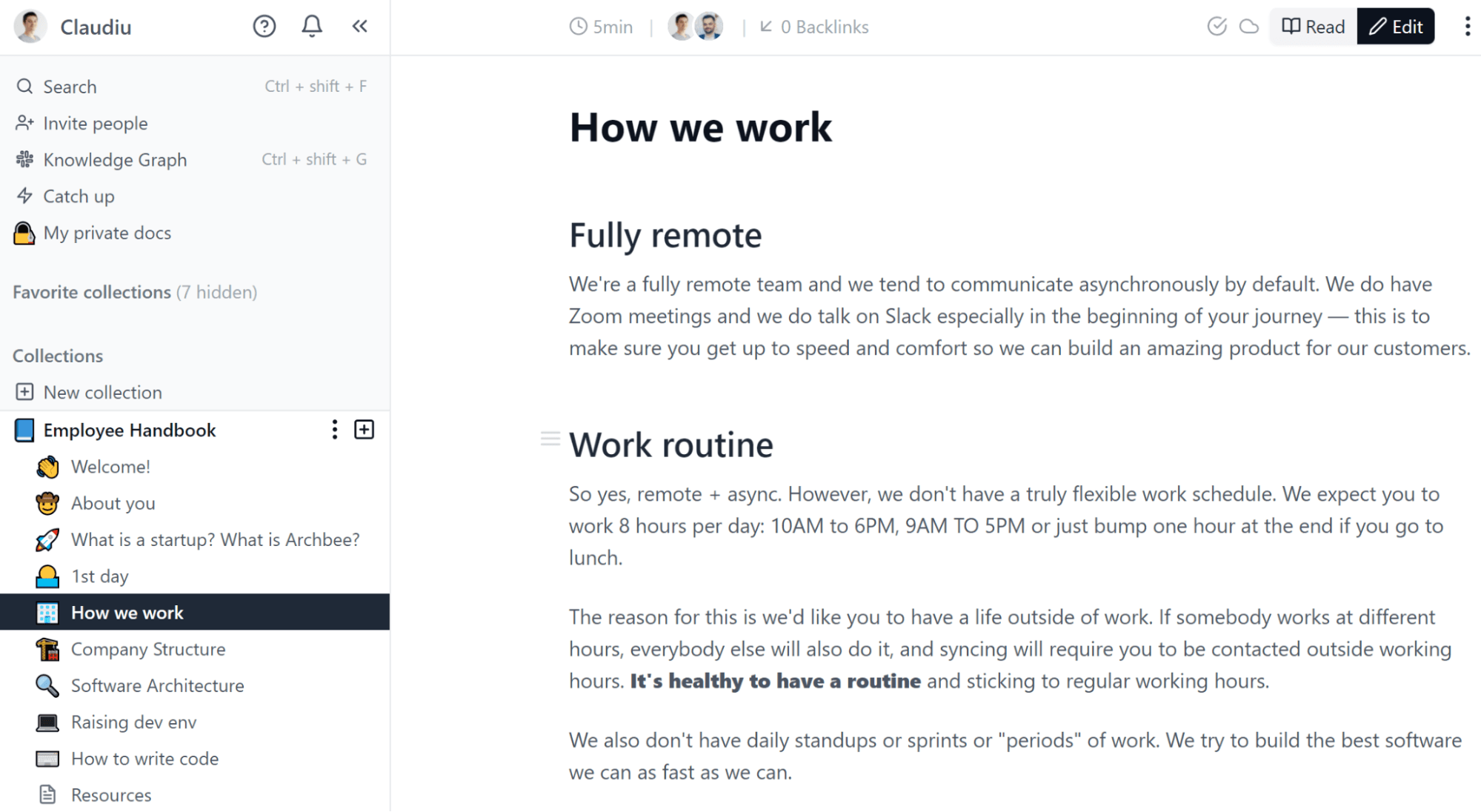
Source: Archbee.com
With Archbee, your employee handbook will always be available online, meaning you can quickly make all the necessary updates and inform other employees that the new salary regulations are in place.
Remember, being crystal clear and transparent regarding salary ranges should always be your priority.
As it can make a significant difference in creating a more diverse and equal workplace culture, making regular and transparent updates is a must.
Drug Testing Policy
Testing to prevent illegal drug use in the workplace is fairly commonplace, but there have been numerous changes in the legislation surrounding marijuana use in recent years that have complicated matters.
Although marijuana is still banned under federal law, it's evident that more and more states are legalizing its use not only for medical, but also for recreational purposes.
As the era of legalization imposes a plethora of crucial questions to the employees, they now have to see how they will organize and maintain a drug-free workplace.
The truth is marijuana use related to the workplace is a rather complex issue, and how you will regulate your drug testing policy can vary from state to state, from industry to industry, and even from company to company.

Source: SHRM
For example, New York recently banned companies from testing employees for cannabis, except for specific categories of workers.
This does not mean that the use of marijuana at work won’t be punished. It simply means that the companies aren’t permitted to test the employees for cannabis, just as they aren’t allowed to discriminate against them if they use marijuana off duty.
So if your company is based in New York, you should keep the new legislation in mind when updating your drug and substance abuse policy.
Some companies are already wondering if they should change the way they test for drugs or if they should conduct drug screening at all.
For instance, Amazon announced last year that it would no longer test marijuana in its extensive drug screening program. It will treat marijuana use in the same way as alcohol use.
And many other employers are considering dropping the drug testing requirements as the trend of legalization spreads.
So how you will address those issues in your employee handbook is up to your state and company regulations. Just be crystal clear when it comes to sensitive legal matters like this, as it can save you a lot of friction down the line.
Conclusion
An employee handbook is what keeps everyone on the same page in a functioning work environment. Therefore, it is crucial that it’s up to date and relevant when it comes to recent law and workplace changes.
In this post, we walked you through eight major employee updates you should consider implementing this year.
Each of them aims to ensure consistency in practice, as well as legal protection. And if you put a little time and effort into enforcing them in your employee handbook, the result will be a more organized and satisfying work experience for everyone.
FAQ
Frequently Asked Questions
An annual refresh keeps your handbook aligned with changing laws (leave, pay transparency, OSHA/health rules), new ways of working (hybrid/remote, data security), and evolving company practices. Up-to-date policies reduce legal and compliance risk, prevent misunderstandings, and promote consistency across teams. They also improve onboarding, reinforce culture, and build employee trust. Tip: partner with legal/HR, date-stamp versions, and collect signed acknowledgements so everyone’s on the same page.



